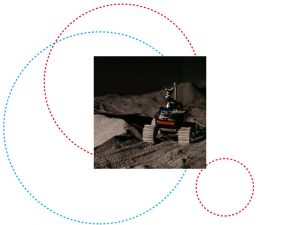On Monday 29 March, it was announced that SpaceR, part of the LUVMI-XR team in the ESA/ESRIC Space Resources Challenge, will advance to the final stage of the competition. The European Space Agency (ESA) and the European Space Resources Innovation Centre (ESRIC) joined forces last year to create the competition, that saw participants design rovers capable of navigating the shadowy poles of the Moon in search of water and other volatiles.
The first stage of the competition took place in November 2021, in which the LUnar Volatiles Mobile Instrumentation – eXtended Rover (LUVMI-XR) team took part alongside twelve other groups. The Space Robotics (SpaceR) research group, led by Prof. Miguel Olivares Mendez, are part of the consortium of LUVMI-XR, and he also serves as the group’s principal robotics researcher. Other members of the team include Space Applications Services, Dynamic Imaging Analytics, CRPG, imec, LPRC and Tohoku University. The challenge involved developing a robot capable of traversing an area of 2500m2 and 14m high, across diverse terrain, in order to locate and characterise resources.
Five groups were announced as finalists, and will take place in the last stage of the competition in September 2022 – at Luxembourg’s Rockhal venue. Each finalist has been awarded €75,000 as part of a development contract with ESA to evolve their prototype in preparation for the final field test. The winning team of October’s final will be awarded €500,000, and the chance to be a part of a robotics mission to the Moon.
The other winning teams include ETH Zurich and University of Zurich from Switzerland, Mission Control Space Services from Canada, Łukasiewicz – PIAP from Poland and FZI Forschungszentrum Informatik from Germany.
In their announcement yesterday, ESRIC’s strategic advisor and project manager, Bob Lamboray, said, “ESRIC is looking forward to welcoming these five winners from this phase to Luxembourg, where they will compete in the lunar environment for this autumn’s second round. Through the ESRIC prize, we will support the final winner to further mature their design and hopefully make it to the Moon in the near future.”
Speaking about the victory, Prof. Olivares Mendez shared, “The success of this mission was based on the hard work of some of the outstanding researchers in SpaceR. We have coordinated efforts and tasks in a very efficient way to accomplish a long traverse of more than 50 meters on semi-autonomous mode and to reach the region of interest. A large part of the merit goes to Dave Van der Meer, student of the Interdisciplinary Space Master, who was monitoring the rover from the ground station.”
